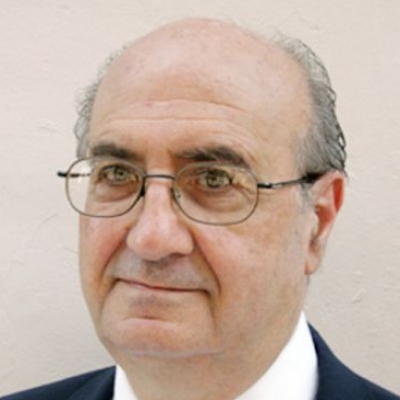Why the US Owes Central America
Today’s refugee wave is a direct consequence of past US interference in Latin America’s political and economic development.
August 2, 2019
Donald Trump sees Latin America as the center of much of the evil that beseeches the contemporary United States. His disgraceful and race bating comments about “rapists” etc. warrant no repetition.
But it is interesting to note what goes unrecognized in the current U.S. debate about immigration from Central and South America. It is instrumental to ask why these countries are so broken politically, economically and socially.
Why are the children here?
True, violent domestic crime and corruption play a significant role in explaining the current migration wave from Central America. But where exactly does all of this come from? That’s the pivotal question.
Let’s zero in on the almost 70% of the children who crossed the U.S.-Mexican border in 2014 that came from what is called the Central American northern triangle, formed by Guatemala, Salvador and Honduras.
Those three countries have suffered for decades from various waves of U.S. intervention in their social and political affairs.
The case of Guatemala
Perhaps Guatemala best exemplifies the consequences of this intervention. For many years, the U.S. controlled coffee and banana trades. In addition, there were heavy-handed demands for oil concessions from the Guatemalan government.
As far back as 1918, the Woodrow Wilson administration — from today’s perspective widely considered a “liberal” stalwart — warned the Guatemalan government, “It is most important that only American oil interests receive concessions.”
In 1954, the U.S. Central Intelligence Agency (CIA) carried out a covert operation that deposed the democratically elected Guatemalan President Jacobo Arbenz. That coup installed Carlos Castillo Armas.
But his was only the first in a series of U.S.-backed authoritarian regimes in Guatemala and it was preceded by U.S. efforts to isolate Guatemala internationally.
The deposed President Arbenz had instituted near-universal suffrage, introduced a minimum wage and turned Guatemala into a democracy.
Castillo Armas quickly assumed dictatorial powers, banned opposition parties, imprisoned and tortured political opponents and reversed the social reforms of the Arbenz government.
The coup was universally condemned and gave rise to strong anti-U.S. sentiment throughout the Americas.
Nearly four decades of civil war followed, with leftist guerrillas fighting a series of U.S.-backed authoritarian regimes. The consequence was the genocide of the country’s Mayan population, when more than 200,000 indigenous people were murdered by Guatemalan military regimes supported by the U.S.
The direct echo effect of all those disgraceful and criminal actions conducted and/or directly supported by the U.S. government is arriving at U.S. borders today.
What other outcome can one expect in a country like Guatemala that was systematically amputated politically and economically?
The case of El Salvador
As it did in Guatemala, the United States also supported the Salvadoran government in its war against the leftist guerrillas from the FMLN.
It provided military aid in the amount of between one and two million dollars per day. U.S. officers took over key positions at the top levels of the Salvadoran military and made critical decisions in conducting the civil war.
The war lasted over 12 years (1979-1992) and resulted in more than 75,000 people murdered or “disappeared.”
According to the United Nations, while 5% of the murders of civilians were committed by the FMLN, 85% were carried out by the Salvadoran armed forces and the paramilitary death squads.
The squads mutilated the bodies of their victims as a way of terrifying the population. The so-called Atlacatl Battalion, which savagely murdered and mutilated six Jesuit priests, was reportedly under the tutelage of U.S. Special Forces just 48 hours before the killings.
And Honduras
Honduras has had historically strong military ties with the United States. In 2009, Manuel Zelaya, a liberal reformist, was ousted in a military coup. The United States refused to call it a coup while working to ensure that Zelaya did not return to power, in flagrant contradiction to the wishes of the Organization of American States.
Today, the country is in disarray: Violent gangs are everywhere, while government spending on health and education has declined.
Conclusion
The most innocent interpretation of the chain of events described above is that Donald Trump simply doesn’t know the roots of Latin America’s profound civic crisis, the roots of which often involve rude and illicit U.S. interference in Latin countries’ domestic affairs.
But even if Trump were historically versed, he would not accept the facts and root causes that are there for all to see. After all, in his world, everything is always the fault of the others – Democrats, foreign nations and especially Central and South American countries.
But such a distorted world view does not mean that the United States can shed its direct responsibility for its past grave misdeeds in the region.
The children that are coming here or are sent here by their parents are the direct and logical consequence of that legacy of shame on the part of the United States over the past century.
While it would be naïve to blame the United States for the all the ills in much of the region, it would be equally naïve to ignore how the U.S. intervention has helped create the situation that plagues it today.
Takeaways
Trump sees Latin America as the center of much of the evil that beseeches the contemporary US.
Violent crime and corruption play a significant role in explaining the current migration wave from Central America. But where does all of this come from?
Today’s refugee wave is a direct consequence of past US interference in Latin America’s political and economic development.
Trump believes everything is always the fault of the others – Democrats, foreign nations and Central and South American countries.
